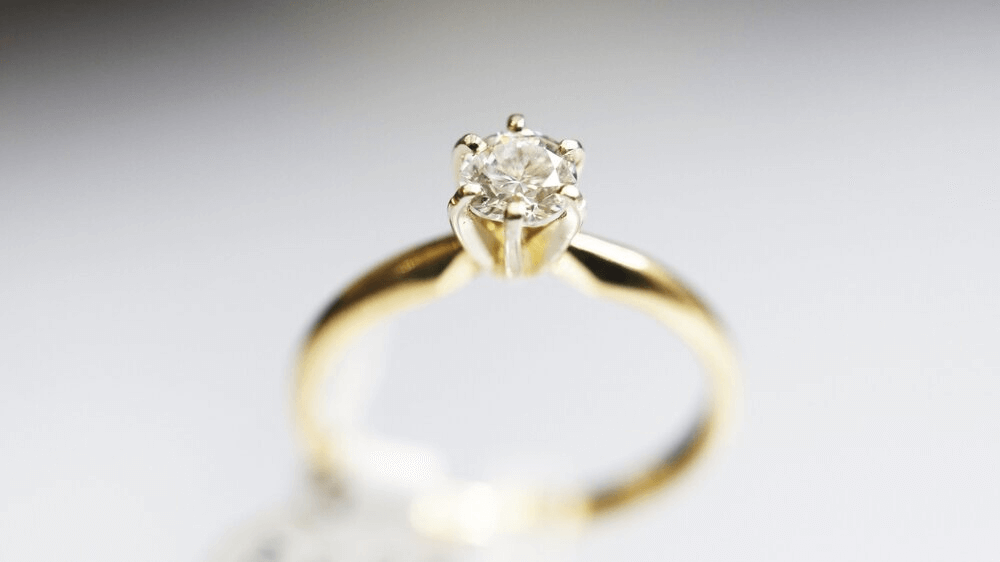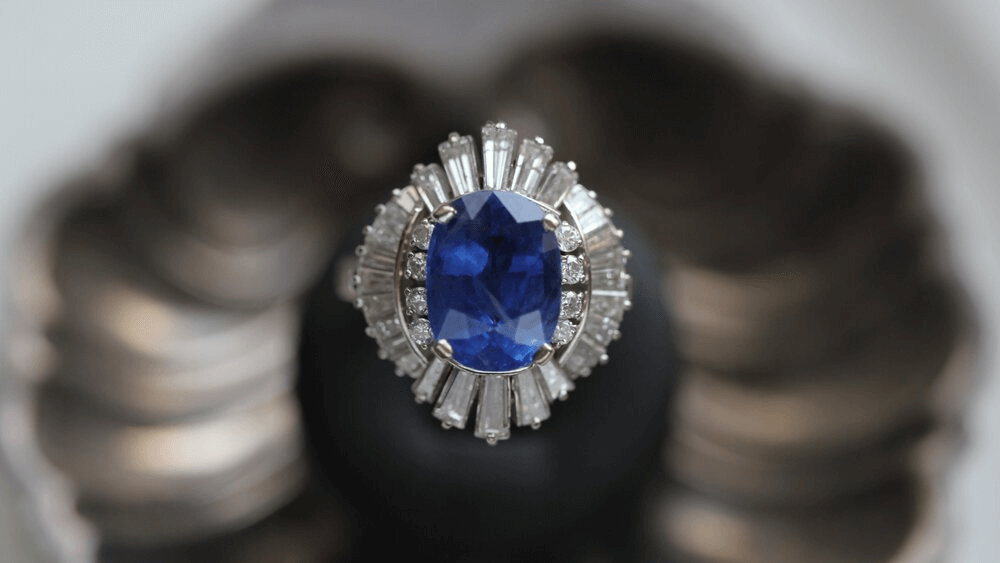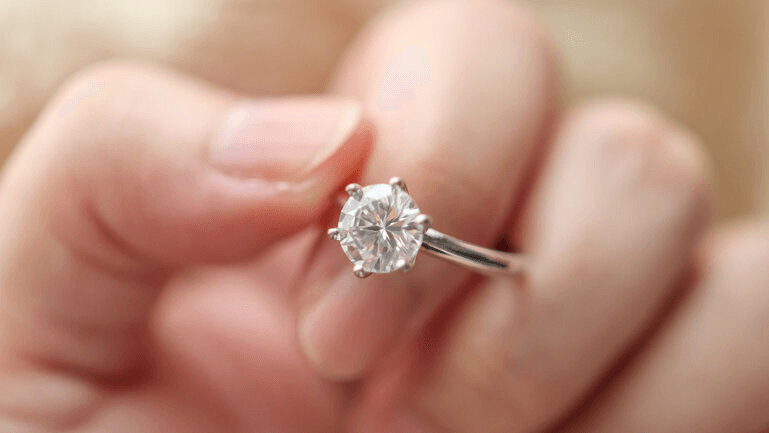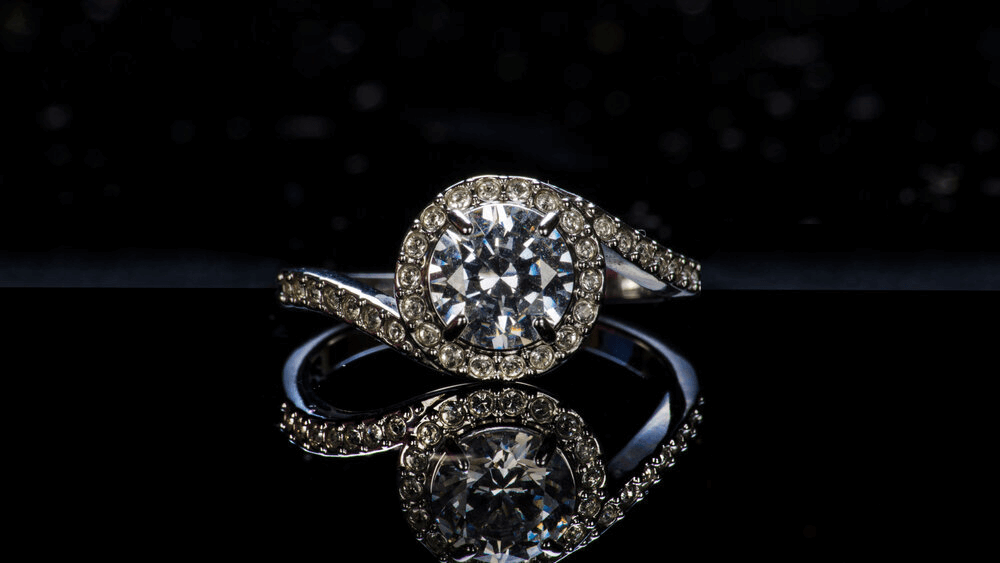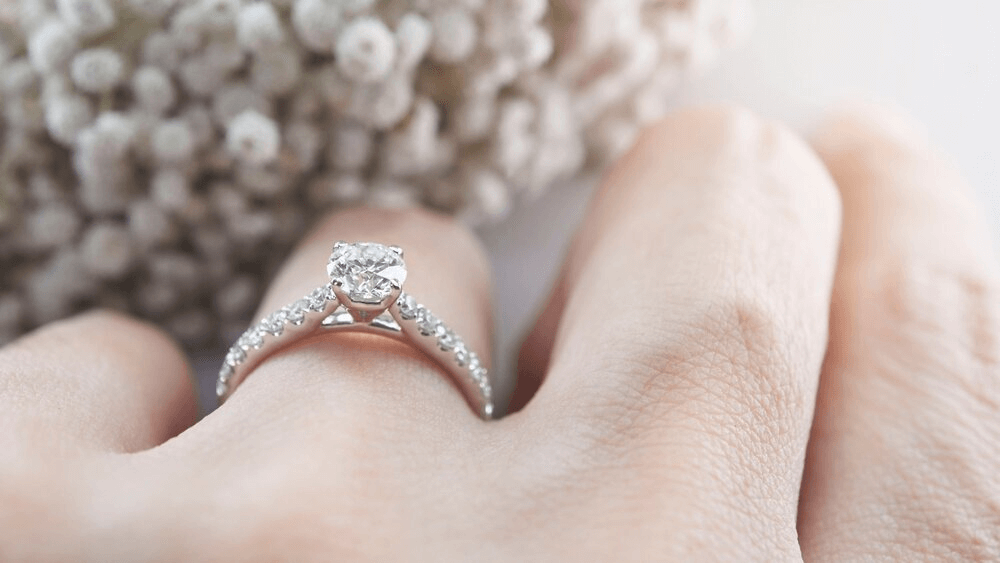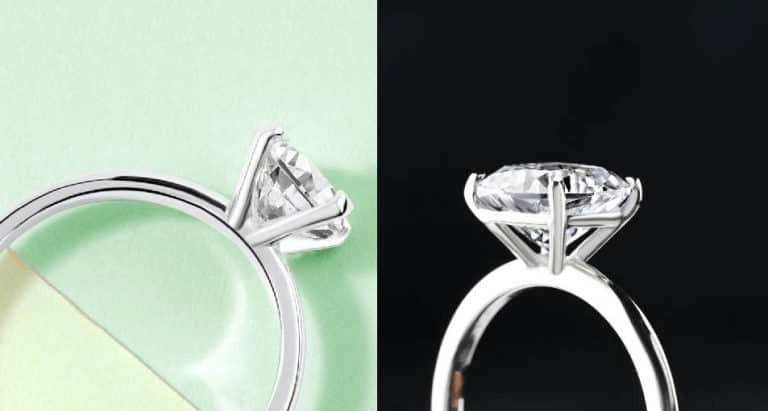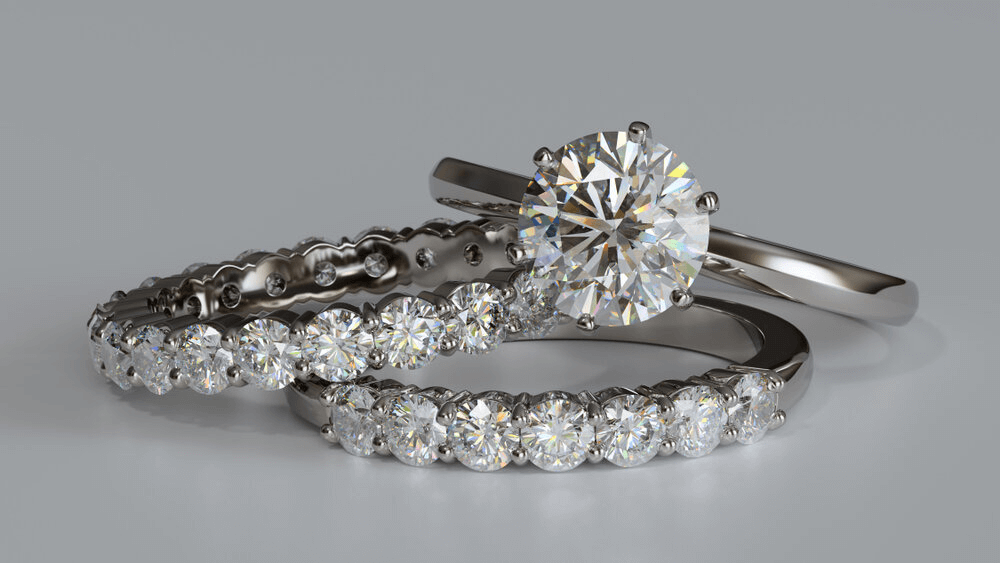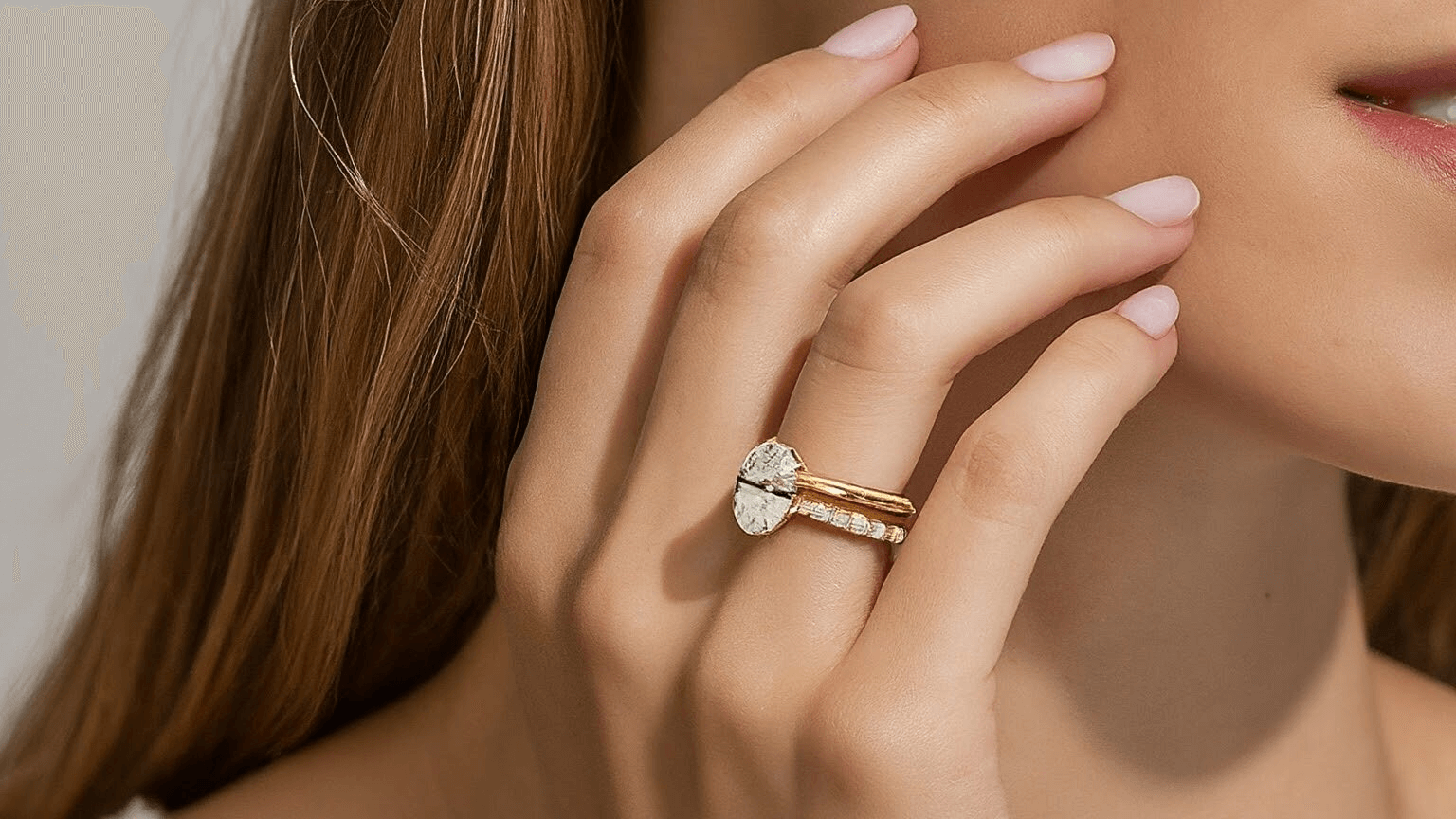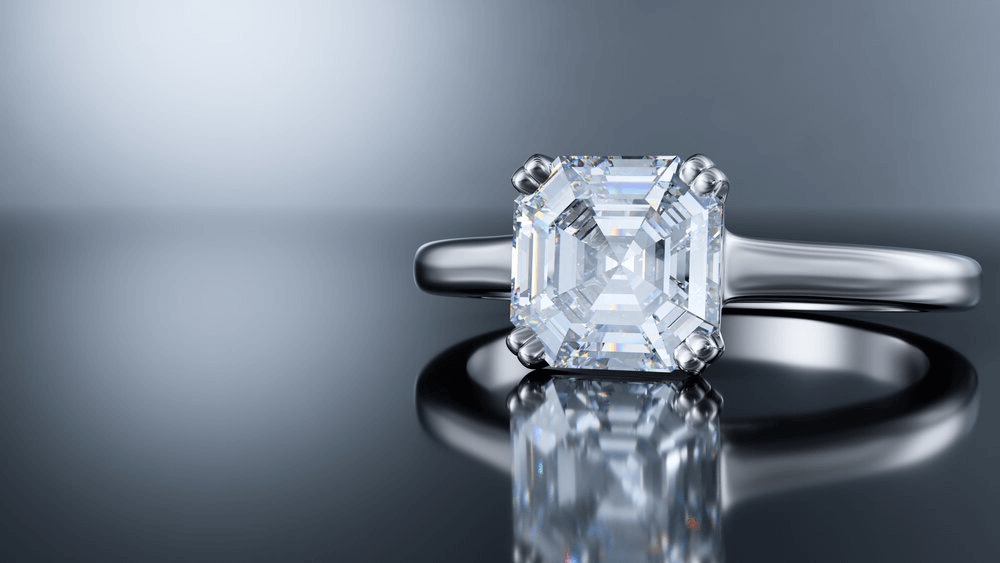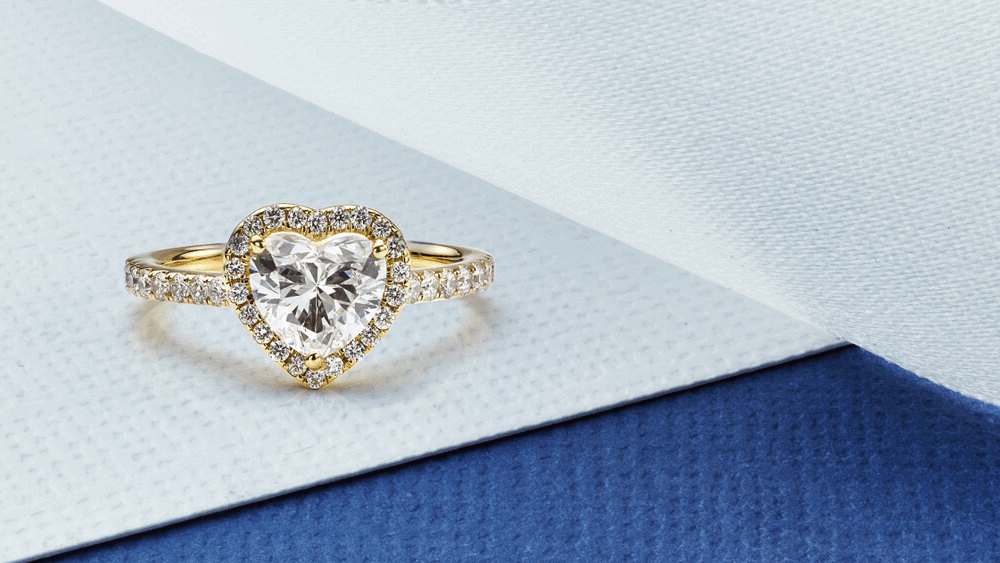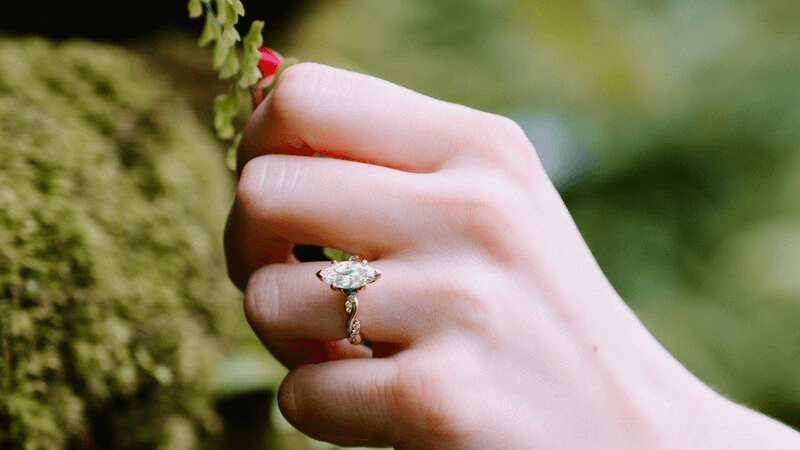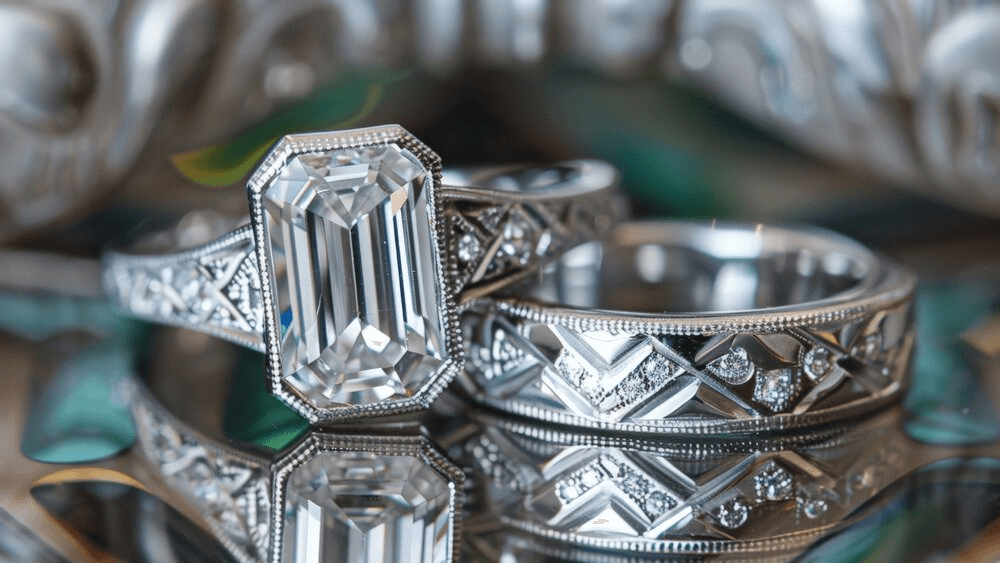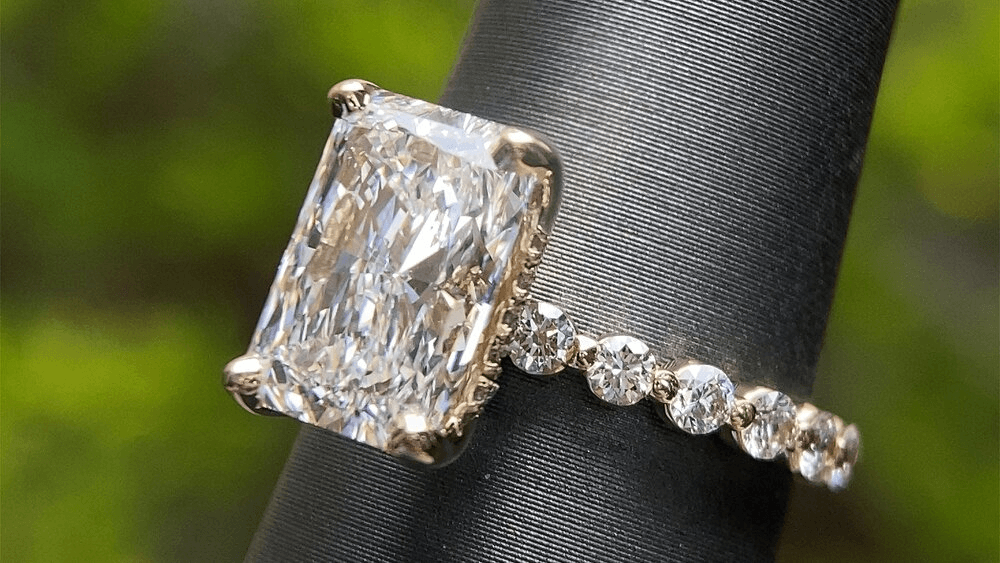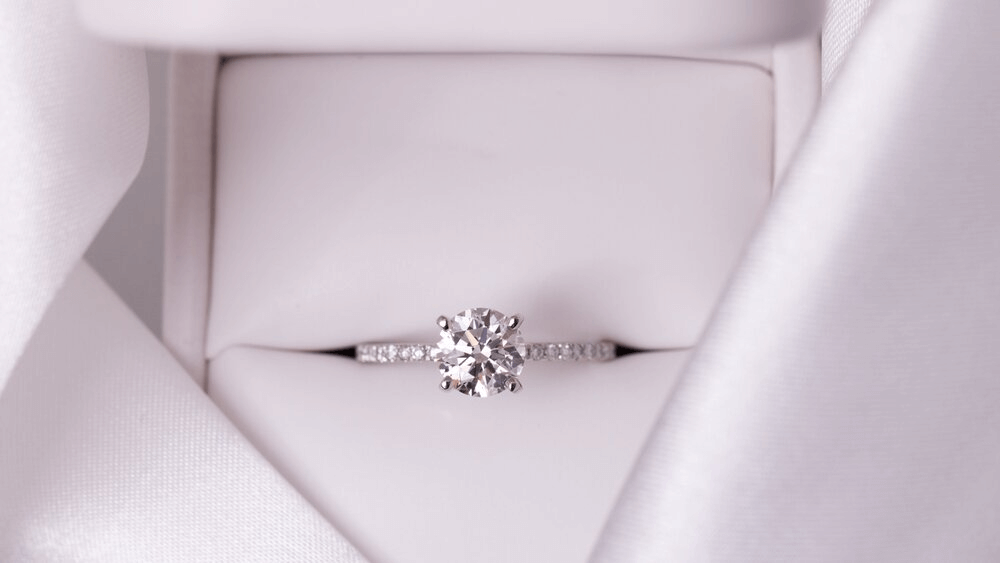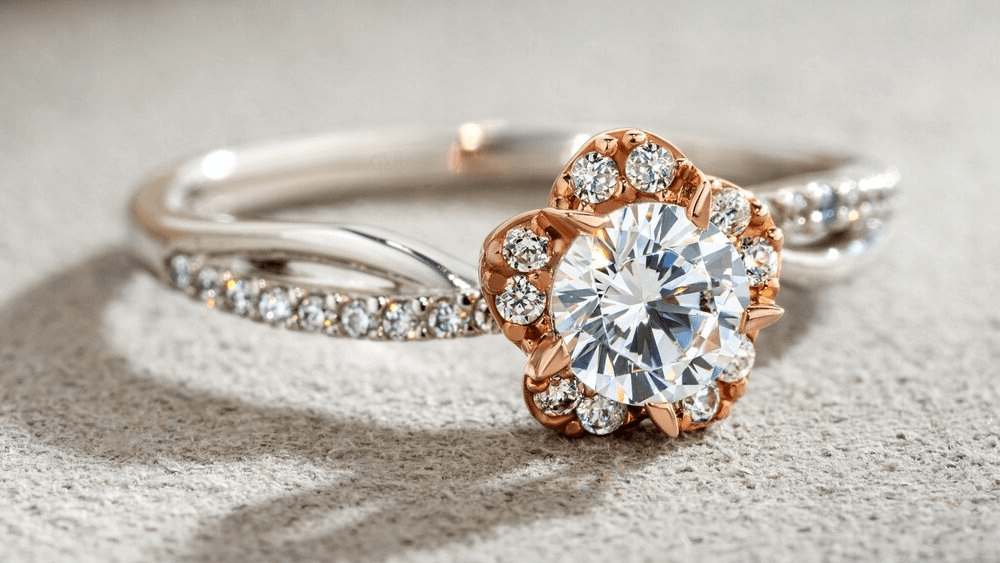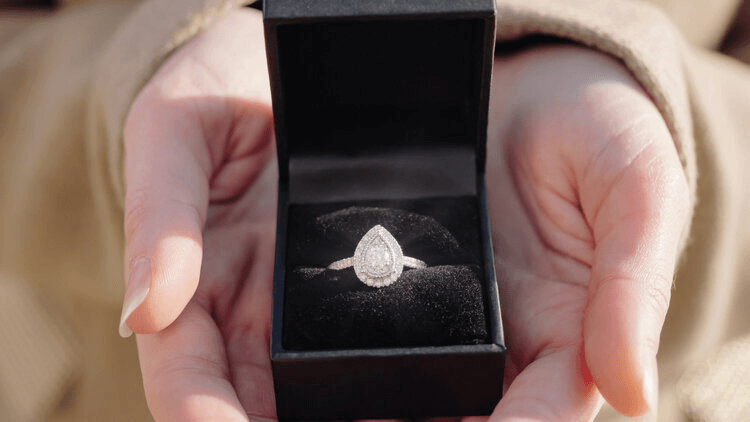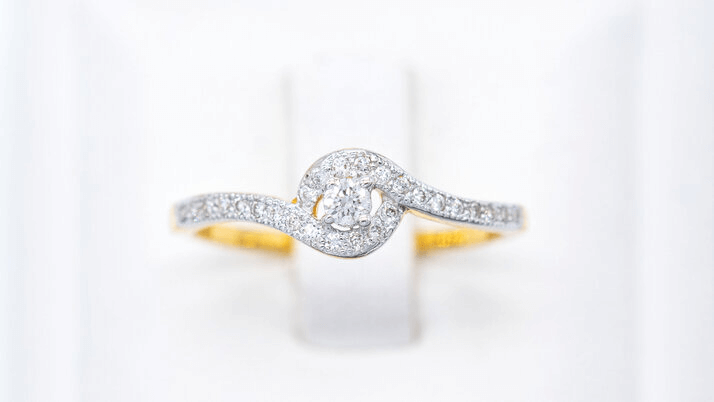Knife Edge Engagement Rings are Taking Over 2025

By Gary A.

Edited by Olivia H.
Published Aug 8, 2024
Edited on Mar 31, 2025
The elegance of a knife edge engagement ring is all about subtle sophistication, offering a modern twist on a classic design that’s anything but ordinary.

Navigate This Guide:
- 4 Quick Tips for Choosing the Perfect Knife Edge Engagement Ring
- Introduction to the Knife Edge Engagement Ring: A Modern Classic
- Unveiling the Knife Edge: Design and Comfort Explored
- The Art of Selection: Finding Your Perfect Knife Edge Ring
- Care and Maintenance: Ensuring Timeless Elegance
- The Perfect Pair: Matching Bands with Knife Edge Engagement Rings
- Our Expert Take
- 10 Frequently Asked Questions
Before we dive deeper into the specifics, here are some practical tips to help guide your decision-making process:
4 Quick Tips for Choosing the Perfect Knife Edge Engagement Ring
- Tip 1. Comfort and Fit:
- Comfort: Knife edge rings have a distinct design with a sharp edge. Some people find them comfortable, while others might feel the edge pressing against their fingers. It’s essential to try on the ring and wear it for a while to ensure it feels comfortable on your finger.
- Tip 2. Durability and Maintenance:
- Durability: The sharp edge of the knife edge ring can be more susceptible to dents or scratches, especially if it’s made of softer metals. Opt for durable metals like platinum or high-karat gold to minimize potential damage.
- Maintenance: While knife edge rings without pavé set stones are generally low maintenance, it’s still crucial to clean them regularly. Ensure the cleaning method is suitable for both the metal and any gemstones on the ring.
- Tip 3. Stone Setting and Appearance:
- Illusion of Size: One of the advantages of knife edge rings is that they can make the center stone appear larger due to the band’s design. Ensure that the stone setting complements this feature.
- Versatility: Knife edge rings are versatile and can pair well with various stone shapes and cuts. However, ensure that the setting securely holds the stone, especially in designs with larger gemstones.
- Tip 4. Matching with Other Rings:
- Pairing with Bands: If you’re considering a knife edge engagement ring, think about how it will pair with a wedding band. Some prefer a matching knife edge wedding band, while others might opt for a different style. Ensure the two rings sit comfortably together if you plan to wear them on the same finger.
Now that you’ve got these practical tips, use Jeweler AI below to find the perfect engagement ring that suits your style and budget:
Introduction to the Knife Edge Engagement Ring: A Modern Classic
The best type of love keeps you on your toes. While it should never be hard, it should at least motivate you to spend morning, noon, and night deliberating over every small detail of your engagement ring.
When it’s finally time to go down on one knee and pop that question of all questions, what better way to demonstrate your commitment than by presenting your beloved with a ring that exemplifies how much you know about them?
A knife edge doesn’t sound as great as living on your toes, unless, of course, we’re talking about the ring on your finger. Knife edge engagement rings of stunning, sleek, and modern – and not as dangerous as they may sound.
Here’s what you need to know.
The Evolution of Elegance: From Tiffany’s to Today
Tiffany & Co. were the pioneers behind the world’s first knife edge band way back in the 19th century, which makes it a lot more of a classic than its modern appearance suggests. Since then, the style has inspired jewelers around the world and remains one of the most popular options for contemporary engagement rings.
Knife Edge vs. Traditional Bands: A Comparative Glance
Traditionally, the band (otherwise known as the shank) of an engagement ring is more or less flat, maybe with an ever so slight curve on top. This tends to be seen as the most comfortable and durable choice, but it isn’t the only option. If you want to add a little extra intrigue to your ring’s design, then look no further than the knife edge.
Instead of a gentle doming on the outside of the shank, a knife edge band features 2 flat edges that converge together. This creates a horizontal ridge that runs the full circumference of the band. If you’re deep into your diamond lingo, can consider the two sides of the shank to be two facets – just don’t expect them to sparkle.
It’s a subtle but powerful adaptation of the traditional ring design. The two sides of the band catch the light differently, creating an attractive contrast. The effect is very modern and more geometric than the ring designs you’re more used to seeing.
Unveiling the Knife Edge: Design and Comfort Explored
A knife edge band isn’t uncomfortable to wear. If you’re used to wearing rounded bands, then it may feel a little different at first, but it’s not filed to a sharp point or so prominent that you’ll feel it jutting against your other fingers.
One of the biggest factors determining comfort is the size of the shank. A thick band will always feel strange at first, whether it’s a knife edge or a more traditional shape.
As always, you want to make sure that the band fits the wearer’s finger. If it doesn’t, it won’t be comfortable.
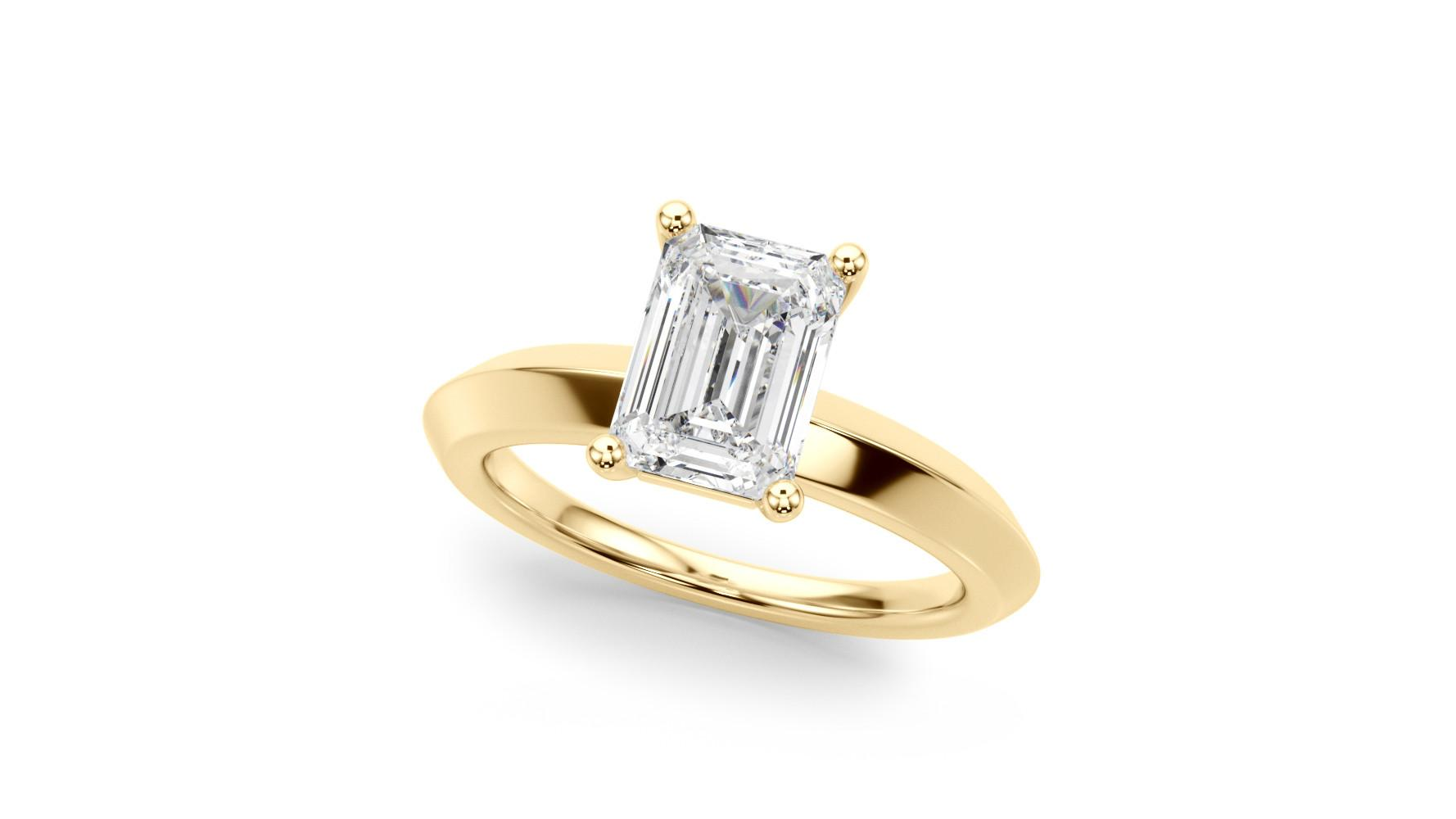
The Anatomy of a Knife Edge Ring
The outer rim of the band comprises two separate facets, which meet in the center and form a ridge that reaches around the circumference of the shank. It’s a simple change, but very powerful and modernising even the simplest solitaire design, and giving even the plushest diamond cut a fresh edge.
Comfort on the Edge: Debunking Myths
Contrary to what a lot of first-time shoppers think, a knife edge ring isn’t nearly as uncomfortable to wear as it sounds. First of all, most engagement ring shanks are only a few millimetres in width, so don’t get caught up on the zoomed-in photography. A properly sized engagement ring won’t cut into the finger.
Plus, the knife edge isn’t nearly as sharp as it sounds. You won’t inadvertently create a pain-inducing engagement ring to rival Machine Gun Kelly’s ring to Megan Fox…
The Art of Selection: Finding Your Perfect Knife Edge Ring
Consider bringing your bride-to-be along with you to try on knife edge rings. It’s unlikely she’ll find it uncomfortable, but it’s always worth checking. Next, you’ll want to think about the two key elements of the ring: the metal and the diamond.
Metal Matters: Platinum to Gold
Since the ridge or high point of the knife edge ring is a little more vulnerable to damage than a flat or curved shank, a durable metal is important. A high karat gold, while desirable for its rich color, isn’t the best choice – instead, opt for a 14K gold. 18K will still be strong, but not as strong as 14K.
Platinum is incredibly strong, as are palladium and titanium – although platinum is the most popular choice of the three, not least of all because of its incredible shine.
Stone Settings That Shine: Pairing with Knife Edge Bands
The knife edge shank design brings a really modern, edgy look, so consider pairing it with a diamond shape that brings a similarly contemporary vibe to the ring. The Princess cut is an excellent example of this; modern, icy and edgy, it looks particularly captivating paired with a platinum knife edge band.
Then again, a rounded shape brings a nice contrast. An Oval solitaire with a knife edge band will be a classic for generations to come – or, of course, the OG itself, the round brilliant.
We also love the dual pairing of geometric shapes that you get when you combine an emerald cut diamond with a knife edge Shank. For this one, we may lean towards a yellow gold band, just to keep a little contrast in the mix.
Care and Maintenance: Ensuring Timeless Elegance
Knife edge rings don’t need any particular care or maintenance – as with any engagement ring, you just want to make sure it stays clean (without using any harsh chemicals) and safe from exertive or risky activities. Take a look at our full guide to caring for your engagement ring here.
We’d recommend you avoid picking a knife edge engagement ring that is too skinny. While it may sound like a good way to avoid any discomfort, the opposite is actually true: A thicker band will create a slightly smoother knife edge, which will prove a lot more comfortable to wear.
The Perfect Pair: Matching Bands with Knife Edge Engagement Rings
It’s a great idea to complement the knife edge band’s edginess with a stark white metal like platinum, and, of course, that stunning, clear center diamond. This design really works best with contemporary settings and diamond shapes, although the timeless classic the Marquise will maximise the ring’s edge.
Coordinating with Wedding Bands: A Harmonious Union
This one really comes down to personal choice. A knife edge Shank for your engagement ring doesn’t necessarily mean that you have to go for a knife edge Shank for your wedding band. In fact, you may think it’s overkill. The power of the knife edge band design is in its simplicity, so don’t overdo it.
Then again, there’s a nice synergy achieved when the wedding band matches the engagement ring. The most important thing to know is that you don’t need to feel pigeonholed into either decision – it’s all about what you like.
Our Expert Take
While the name may make it sound tough, there’s nothing hard to love about the knife edge ring design. Simple but effective, this twist on the traditional band is enough to transform even that classic of classics, the round brilliant solitaire.
Keep in mind the fact that some people may find the knife edge slightly uncomfortable, but ensuring that you’re buying your engagement ring true-to-size will help to minimise any risks there.
10 Frequently Asked Questions:
- Q: What is a knife edge engagement ring?
- A: A knife edge engagement ring features a band with a pointed edge that runs along the center, creating a sleek and angular appearance.
- Q: Are knife edge rings comfortable to wear?
- A: Comfort varies by individual; some find the distinct edge comfortable, while others may need time to adjust. Trying on the ring before purchasing is recommended.
- Q: Can knife edge rings be paired with any wedding band?
- A: Yes, knife edge engagement rings can be paired with various wedding bands, including matching knife edge bands or different styles for a unique look.
- Q: How do I care for a knife edge ring?
- A: Care for knife edge rings as you would any fine jewelry: avoid harsh impacts, remove during heavy activities, and clean gently with warm water and mild soap.
- Q: Are knife edge rings more expensive than other styles?
- A: Not necessarily. The price depends on factors like metal type, stone settings, and craftsmanship, rather than the knife edge design itself.
- Q: Is the knife edge design suitable for all diamond shapes?
- A: Yes, the knife edge design can complement various diamond shapes, enhancing the stone’s appearance and making it seem larger.
- Q: What metals are best for knife edge engagement rings?
- A: Durable metals like platinum and gold are ideal for knife edge rings, offering strength and maintaining the ring’s sharp appearance over time.
- Q: Can knife edge engagement rings be resized?
- A: Yes, most knife edge rings can be resized, though the process may vary depending on the ring’s design and metal type. Consult with a jeweler for specifics.
- Q: How does the knife edge design affect the appearance of the center stone?
- A: The knife edge design can create an illusion of a thinner band, making the center stone appear larger and more prominent.
- Q:. What should I consider when choosing a knife edge engagement ring?
- A: Consider comfort, the style and size of the center stone, how it pairs with potential wedding bands, and the durability of the metal used for the band.
Find your edge with Jeweler AI‘s personalized knife edge ring selections.
FOLLOW-UP GUIDE SERIES





